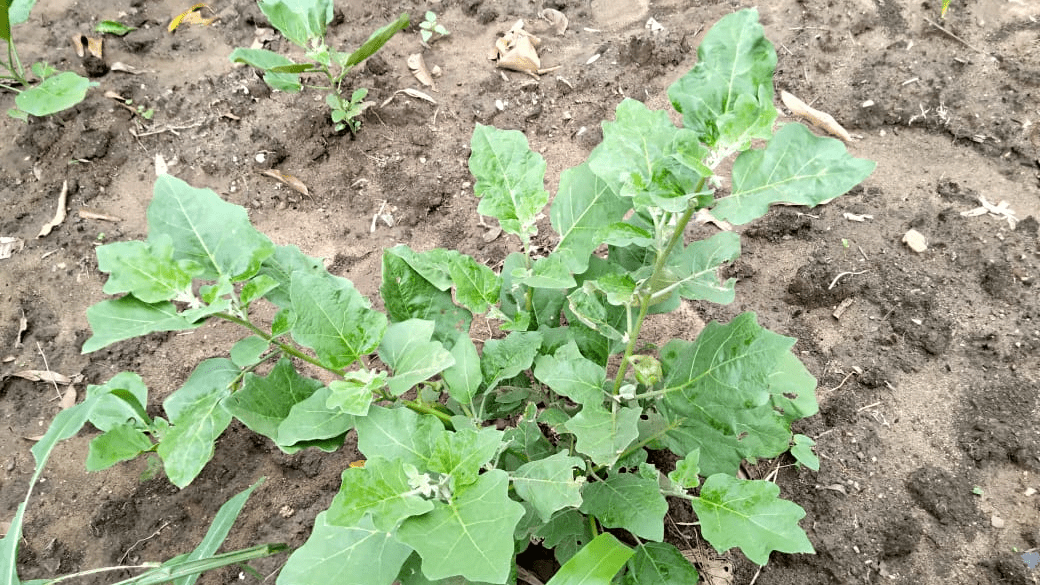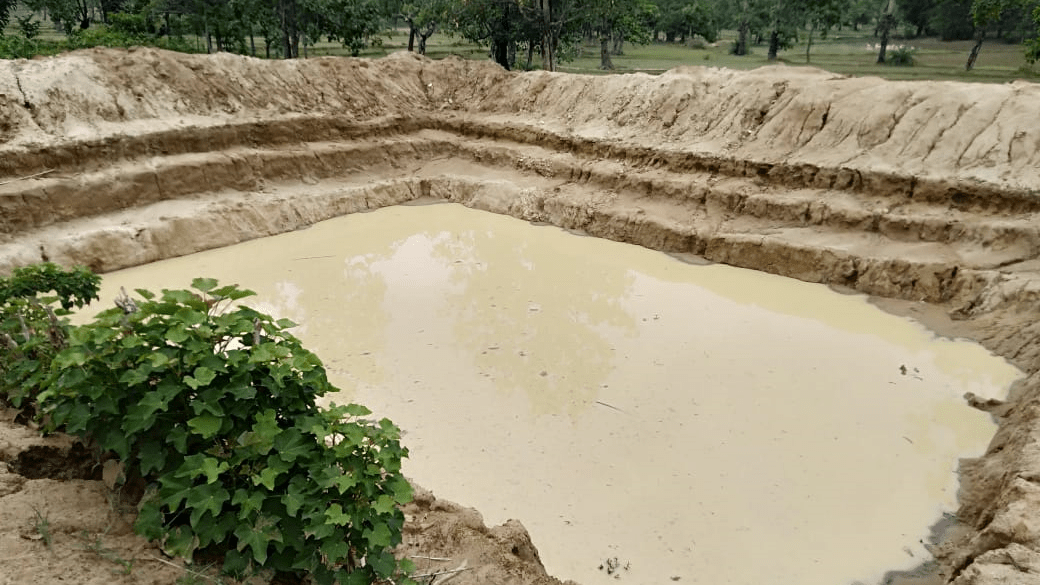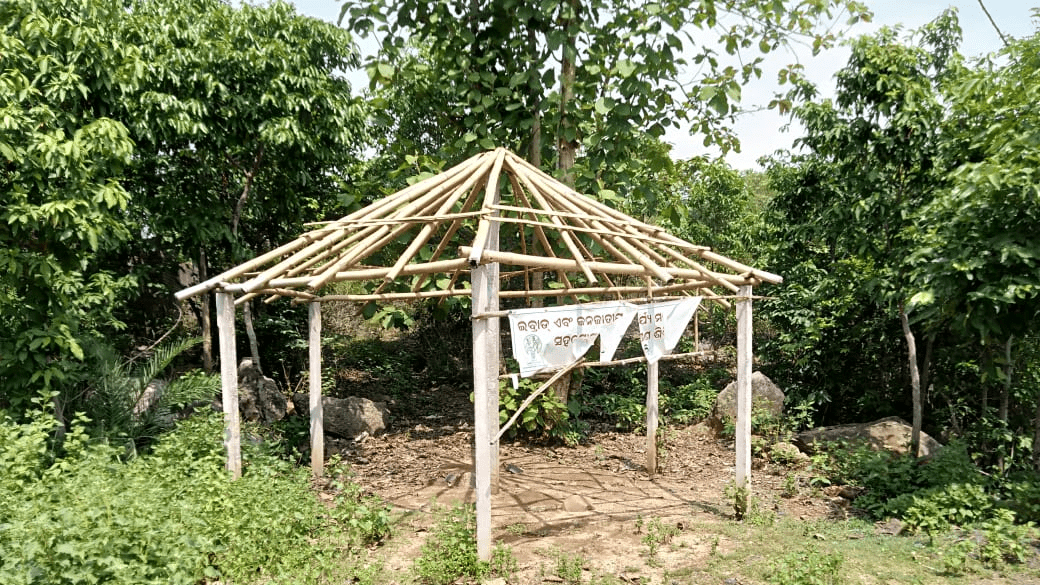Since March 2022, the Indian Institute for Bio-Social Research and Development (IBRAD) in Kolkata has been working in partnership with the Odisha Forest Department and the Ministry of Tribal Affairs to implement a community development project. This project focuses on indigenous communities in the Kaptipada Block of Mayurbhanj district, Odisha. A significant achievement of this initiative is the initiation of social change aimed at conserving natural resources.
The innovative use of Information Technology (IT) and Android phones has revolutionized the training process in the project. Through the “Prashikshan Shivir” conducted at the village level and with the assistance of experts from Participatory Research Organizations like IBRAD (Indian Institute of Bio Social Research and Development), the project staff, and local communities have greatly benefited.
This technology-driven approach has facilitated enhanced knowledge, understanding, and skills among the participants, enabling them to effectively implement project activities in alignment with the planned objectives and allocated budget. It has proven to be a groundbreaking initiative, fostering improved learning outcomes and successful project execution.

Table of Contents
Sustainable Livelihoods in Indigenous Communities
The local indigenous communities, namely the Lodhas, Santhals, and Mankidia communities, have a deep connection with the forests, as they rely on them for their sustenance and way of life. Their traditional occupations mainly involve gathering and hunting. During the monsoon season, these communities practice shifting cultivation, focusing on crops like paddy and minor millets. The Mankidia (PVTGs) and Lodha community, being the first-generation cultivators, play a vital role in agricultural labor, daily wage labor, collection of Non-Timber Forest Products (NTFPs), mining, and quarrying activities, among others.
The local communities in the district face periods of food scarcity, particularly from April to June, which results in hunger. Alarming rates of anemia among women (over 50%) and malnourishment among children (over 37%) further emphasize the need to address food and nutritional security, promote ecological restoration, enhance community capacity building, and strive for holistic tribal development. The daily dietary diversity among the reference communities is poor, with diets predominantly consisting of carbohydrates and lacking essential fats, proteins, and vitamins.
To tackle these challenges, the Navaratna principles of IBRAD, along with associated activities, are currently being implemented in the operational villages. It is crucial to facilitate community-led processes that encourage the adoption of sustainable agriculture practices, improve daily dietary diversity, and provide support for rural livelihoods.
Implementation Strategies for Sustainable Development

The project implemented various strategies to promote capacity building and training, with the application of Digital Ethnography playing a key role. Local field assistants provided hands-on support at the field level, while Community Resource Persons were identified, trained, and equipped with the necessary skills. Residential training sessions were conducted in Kolkata to enhance knowledge and expertise.
Additionally, the formation of small Common Interest Groups (CIGs) facilitated collaborative planning and implementation of activities. Several specific initiatives were undertaken, including the establishment of organic nutrition gardens, water conservation and fishery projects, vermicompost preparation, herbal garden conservation, seed bank preparation, pasture development, fruit tree plantation, small nursery development, and the non-destructive harvesting, processing, and value addition of Non-Timber Forest Products (NTFPs). These efforts aimed to promote sustainable practices, preserve medicinal plants and ensure the efficient utilization of natural resources.
Empowering Communities: Key Activities

The project involved several activities to empower the community and promote sustainable development:
- Identification of Self-Initiated Community Organisers (SICO) and the formation of Common Interest Groups (CIG): SICO members were identified to take the lead in organizing and mobilizing the community, while CIGs were formed to foster collaboration and implement various initiatives.
- Participatory planning: The project facilitated participatory planning processes to identify interconnected activities within the village landscape. This involved active involvement and input from CIG members, who played a vital role in implementing the identified activities.
- Establishment of Prashikshan Shivir: A dedicated training and learning hub, known as Prashikshan Shivir, was established. This served as a central location for continuous training programs to enhance the knowledge and skills of community members.
- Forest area identification and restoration planning: Forest areas were assessed and classified according to specific criteria. A comprehensive plan for restoration was developed, which included measures such as the use of seed balls to promote reforestation and ecological rehabilitation.
Unique Aspects of the Project

- Integration of Information Technology (IT): Harnessing the power of IT and android phones, the project has implemented innovative approaches such as the “Prashikshan Shivir” at the village level, facilitated by experts from IBRAD in Kolkata. Regular virtual interactions, feedback mechanisms, and observation systems have been established, utilizing the availability of mobile towers in remote tribal areas. These technological initiatives have revolutionized training methods and facilitated knowledge exchange.
- Field-Lab Model: The project adopts a dynamic field-lab model, allowing for live demonstrations of socio-economic and cultural activities. This approach fosters the exchange of ideas and experiences between the field and the laboratory, creating a continuous learning loop.
- The “Navratna” Concept: A unique concept developed by IBRAD, the “Navratna” approach is being implemented in all operational villages. This holistic concept focuses on grounding and facilitating sustainable development initiatives, covering various aspects of community well-being.
- Scientific Process of Community Development and Women Empowerment: The project follows a systematic step-by-step approach to community development and women’s empowerment. Through targeted trainings, the project aims to build skills and capacities among community members, enabling them to actively contribute to their society’s progress.
- Ice-Breaking Sessions and Group Formation: Ice-breaking sessions are conducted to foster a sense of camaraderie and understanding among indigenous women and men. This leads to the formation of Self-Help Groups (SHGs) comprising both women and men. Creating an enabling environment, these groups work collectively to support each other’s growth and development.
- Developing the Physical Environment: The project recognizes the significance of developing the physical environment, including land, water, forests, and biodiversity, for the holistic development of indigenous communities. By focusing on sustainable ecosystem services, the project aims to ensure long-term environmental stability and resource availability.
- Skill Development and Trade-based Initiatives: The project emphasizes skill development among indigenous communities. Training programs are conducted on various trade-based skills such as nursery raising, pickle making, handicraft production, medicinal plant cultivation, and seed treatment. These initiatives empower community members to generate sustainable livelihoods.
- Collective Farming and Community Capacity Building: The project promotes collective farming by encouraging local communities to pool their small plots of land for cultivating vegetables collectively. Thematic trainings and exposure visits, especially targeting women and youth, contribute to community capacity building and empowerment.
- Monitoring and Follow-up: Recognizing the importance of monitoring, follow-up, and timely corrective actions, the project ensures that communities’ efforts are acknowledged and supported. IBRAD provides digital handholding using digital ethnography, empowering local communities and facilitating continuous growth and development.
- Recognition and Rewards Program: To maintain the interest and continued engagement of local indigenous women and men leaders, the project has implemented a recognition and rewards program. This initiative celebrates their collective actions and contributions, fostering a sense of pride and motivation within the community.
Empowering Local Communities through Knowledge, Attitude, Behavior, and Practice Change

The local communities have demonstrated a positive response and willingness to implement the IBRAD project interventions for eco-restoration and sustainable tribal development. Both women and men actively engage in project activities, with valuable support from IBRAD.
Significant changes have been observed in all operational villages. Targeted households have embraced organic farming practices, and the formation of Self-Help Groups (SHGs) has commenced, although they are in the early stages. Women gather monthly for group meetings, although the opening of bank accounts is still pending. Both women and men express interest in participating in “On Farm” and “Off Farm” activities facilitated by IBRAD.
The following activities and collaborations with various stakeholders have been initiated in close partnership with the local indigenous communities:
- Vermiculture: Local communities are provided with local earthworm varieties for the decomposition of organic waste, with a conversion period of approximately 45 days. Consideration is being given to supporting the Icinea foetida variety, which has a shorter conversion period of 30 days. This intervention has proven beneficial for smallholder farmers, enabling them to use vermicompost in their vegetable gardens and for sale in local markets.
- Kitchen Gardens: Encouraging households to establish kitchen gardens helps improve household food and nutritional security by promoting the consumption of greens and vegetables. Supporting the cultivation of Moringa (Drumstick) trees, known for their nutritional value, is recommended.
- Seed Balls: Innovative seed propagation methods, using seed balls, are employed to regenerate degraded forests with indigenous and native tree species. Self-Help Groups prepare seed balls containing seeds of native trees such as Tamarind and Cashewnut, which are then dispersed in open forests to facilitate natural regeneration.
- Sabji Bari (Vegetable Garden): Promoting the establishment of vegetable gardens at the household level enhances the consumption of greens and vegetables, leading to improved food and nutritional security.
- Medicinal Gardens: Creating medicinal gardens near water bodies provides local communities with immediate access to medicinal plants for treating common ailments, including snake bites.
- Pisciculture (Fisheries): Small-scale fisheries offer income generation opportunities for local communities.
- Construction of Small Water Harvesting Structures: Building tanks/ponds for water harvesting provides life-saving irrigation for farmlands and kitchen gardens.
- Fruit Tree Plantations: Distribution and planting of fruit saplings, such as Jamun, Mango, Lemon, and Papaya, contribute to improved dietary diversity and provide potential for sale.
- SHG Formation and Strengthening: The formation of Self-Help Groups is a crucial process for community collectivization among women and men. These groups serve as vital platforms for development interventions and collective actions at the grassroots level.
- Handholding, Monitoring, and Evaluation: Engaging with local communities through continuous support, monitoring, and evaluation processes are key to facilitating social transformation.
- Documentation and Reporting: It is important to document and share the learnings from the project with relevant development actors, donors, the government, and the wider civil society to facilitate knowledge dissemination and informed decision-making.
Change in Knowledge, Attitude, Behaviour, and practice of local communities
Local communities are receptive and have shown interest in implementing the project interventions of IBRAD for overall eco-restoration and promoting sustainable tribal development. Women and men are engaged in all project activities, aptly supported by IBRAD.
Positive change is observed in all the operational villages. Targeted households have adopted organic farming practices, and the group formation process into SHGs has started and is at a very nascent stage. Women have come together and sit for group meetings once a month. However, bank passbooks are yet to be opened in the local Banks. Women and men are interested to take up “On-Farm” and “Off-Farm” activities, facilitated by IBRAD.
The following activities and engagements with various stakeholders were initiated in close collaboration with the local indigenous communities:

- Vermiculture: Presently, local varieties of earthworms (5-8 cm size procured from Balasore) are supported by the local communities. These are useful in the decomposition of the refuge and organic waste and the conversion period is about 45 days. Icinea foetida variety of earthworms may also be supported which will bring down the conversion period to 30 days (can be procured from the Fruit market, Hyderabad); This intervention has been particularly useful for the smallholder farmers, now being able to apply the vermicompost manure in their vegetable gardens and also for sale in the local market.
- Kitchen Gardens: These are useful to ensure household consumption of greens and vegetables and improve household-level food and nutritional security. Moringa (Drumstick) trees can be supported as this is a superfood. Targeted households need to be motivated to consume more vegetables, proteins, and fats.
- Seed balls: These are innovative methods for the propagation of indigenous and native tree species for the regeneration of degraded forests. Native tree species seeds (Tamarind, Cashewnut) are mixed and seed balls are prepared by SHGs and dispersed in the open forests for regeneration of the natural forests.
- Sabji bari (Vegetable garden): These are useful to ensure household consumption of greens and vegetables and improve household-level food and nutritional security.
- Medicinal gardens: These are useful for the local communities for the immediate treatment and relief of common ailments including snake bites. Local Medicinal plants are presently promoted in a single contiguous patch of land close to a water body.
- Pisciculture (Fisheries): These are useful for the income generation of local communities. Small-scale fisheries are useful for local communities.
- Construction of small water harvesting structures like Tanks/Ponds: These are useful for life-saving irrigation to farmlands and kitchen gardens.
- Fruit tree plantations: Fruit saplings of Jamun, Mango, Lemon, Papaya, etc., were distributed to the local communities and planted. These are useful for improving daily dietary diversity and for sale.
- SHG formation and strengthening: This process is crucial for the community-level collectivization of women and men. They are key platforms for development interventions and collective actions at the grassroots level.
- Handholding, Monitoring, and Evaluation: These are key processes for engagement with local communities and facilitating social transformation processes.
- Documentation & Reporting: This is important to record and share the learnings with key development actors, donors, the Government, and the larger civil society.
Way Forward: Empowering Communities for Sustainable Development

- Participatory Learning and Action (PLA) and REFLECT Circles: Initiate PLA and REFLECT circles where the community takes the lead in understanding their current situation and developing collective action mechanisms, systems, and processes. Utilize Digital Ethnography and Android phones for enhanced engagement.
- Establishment of Grain and Seed Banks: Set up grain banks and seed banks in operational villages to conserve local indigenous varieties of food crops, including cereals, millets, pulses, and oilseeds. Preserve crops that have withstood extreme climate variations. Identify community storage structures, and repair and maintain traditional storage structures like “Puhalo” (paddy straw storage structures), baskets, storage bins, and “Khani” (underground storage structures) while ensuring appropriate temperature, humidity, and oxygen levels.
- Structured Community Capacity Building: Implement systematic community capacity-building processes using Digital Ethnography techniques and Android phones to empower local communities with knowledge and skills.
- Documentation of Indigenous Knowledge Systems: Systematically document indigenous knowledge systems and practices (ITKs) of local indigenous communities through text and video documentation.
- Promoting Mulching Practices: Support and promote mulching practices to enhance organic matter and water-holding capacity in degraded and poor lands.
- Integrated Pest Management (IPM): Promote Integrated Pest Management systems and practices to control pests and diseases in a sustainable manner.
- Support for “On-Farm” and “Off-Farm” Livelihoods: Provide support for sustainable “On-Farm” and “Off-Farm” livelihoods. Develop business plans for small entrepreneurial initiatives. Explore opportunities such as Sal leaf plate making using leaf pressing machines and basket making from Palm leaves, leveraging the skills of local artisans.
- Protection and Management of Sacred Groves: Protect and sustainably manage sacred groves by provisioning and planting native tree species to preserve local ecological biodiversity.
- Cultivation and Management of Wild Food Plants: Promote the cultivation and sustainable management of wild food plants, including tree crops and fruits, to enhance food security and diversify local diets.
- Gender Mainstreaming: Prioritize gender mainstreaming, gender equality, and gender equity across all programs and at all levels, ensuring inclusivity and empowerment of women.
- Influencing Government Policies and Programs: Advocate for policies and programs that benefit indigenous communities, especially Particularly Vulnerable Tribal Groups (PVTGs), to scale up innovative models and best practices.
- Fundraising for Research and Development: Seek funding from various donors, including international donors, institutional donors, bilateral and multilateral organizations, UN agencies, CSR foundations, government, the private sector, and individuals to support participatory research, development projects, and organizational development (OD).
Conclusion
the utilization of Digital Ethnography has proven to be a valuable tool in facilitating community transformation processes, particularly among the indigenous communities residing in the remote tribal hinterlands of the Mayurbhanj district, Odisha. Through implementing various initiatives, such as technical and thematic training, the formation of Common Interest Groups (CIGs), and the establishment of training hubs, the project has successfully enhanced the knowledge, skills, and understanding of project staff and local communities.
Moreover, the project has addressed critical issues of food and nutritional security, ecological restoration, and holistic tribal development, focusing on sustainable agriculture practices, community capacity building, and the empowerment of women and youth. By leveraging Information Technology (IT) and mobile phones, the project has effectively bridged the gap between remote communities and experts, enabling continuous learning and support.
Moving forward, it is imperative to sustain and expand these efforts, fostering participatory learning, documenting indigenous knowledge systems, promoting sustainable livelihoods, and influencing government policies to scale up innovative models for the benefit of indigenous communities. Overall, the use of Digital Ethnography has demonstrated its value in driving positive change and empowering marginalized communities in their journey toward holistic and sustainable development.


